Introduction
Imagine walking through a world where sacred entrances transport you to a realm of artistic marvels. A place where ancient traditions and modern aesthetics intertwine, creating a captivating fusion of history, art, and culture. Welcome to the enchanting world of Torii Gates (鳥居) in Japan. These beautifully crafted structures have mesmerized visitors from around the globe, drawing them into a journey of discovery and awe. In this article, we will delve into the historical significance, diverse styles, symbolic meaning, artistic beauty, and cultural importance of Torii Gates. Get ready to immerse yourself in the magic and embark on a captivating exploration of the Torii Gates in Japan.
The Historical Significance of Torii Gates
The historical significance of Torii Gates is deeply rooted in the rich tapestry of Japanese culture and tradition. These iconic structures have stood for centuries as symbols of sacredness and spirituality, serving as portals between the earthly and divine realms. Understanding their historical context allows us to appreciate the profound impact they have had on Japanese society and the enduring legacy they represent.
The origins of Torii Gates can be traced back to ancient Shinto beliefs, where they served as markers to demarcate the border between the ordinary world and the sacred precincts of a shrine. These gates were considered the entrance to the realm of the gods, symbolizing a transition from the profane to the sacred. Over time, Torii Gates became more ornate and elaborate, reflecting the growing emphasis on their spiritual significance.
Throughout Japanese history, Torii Gates have played a pivotal role in commemorating important events and individuals. Many Torii Gates were dedicated to emperors, shoguns, or other prominent figures, serving as a testament to their divinity or legacy. The construction of these gates often involved the whole community, with the process becoming a collective act of devotion and reverence.
Moreover, Torii Gates have witnessed significant societal transformations throughout the ages. During the Meiji Restoration in the late 19th century, Shintoism was designated as the state religion, and Torii Gates became symbols of national identity and cultural heritage. The government actively promoted the restoration and preservation of shrines and Torii Gates as a way to reconnect with Japan’s traditional roots.
Today, Torii Gates continue to captivate visitors with their historical significance and artistic beauty. They serve as enduring reminders of Japan’s deep spiritual heritage and the importance of preserving cultural traditions. Whether they stand atop a mountain, mark the entrance to a shrine, or line a path through a vibrant forest, Torii Gates hold a timeless allure that invites exploration and contemplation. As we delve into the various styles and symbolic meanings of Torii Gates, we will uncover the nuances and intricacies that make each gate a unique work of art, showcasing the skill and creativity of Japanese craftsmen throughout the ages. Prepare to be transported into a world where the past and present intermingle, and where the historical significance of Torii Gates continues to enchant and inspire.
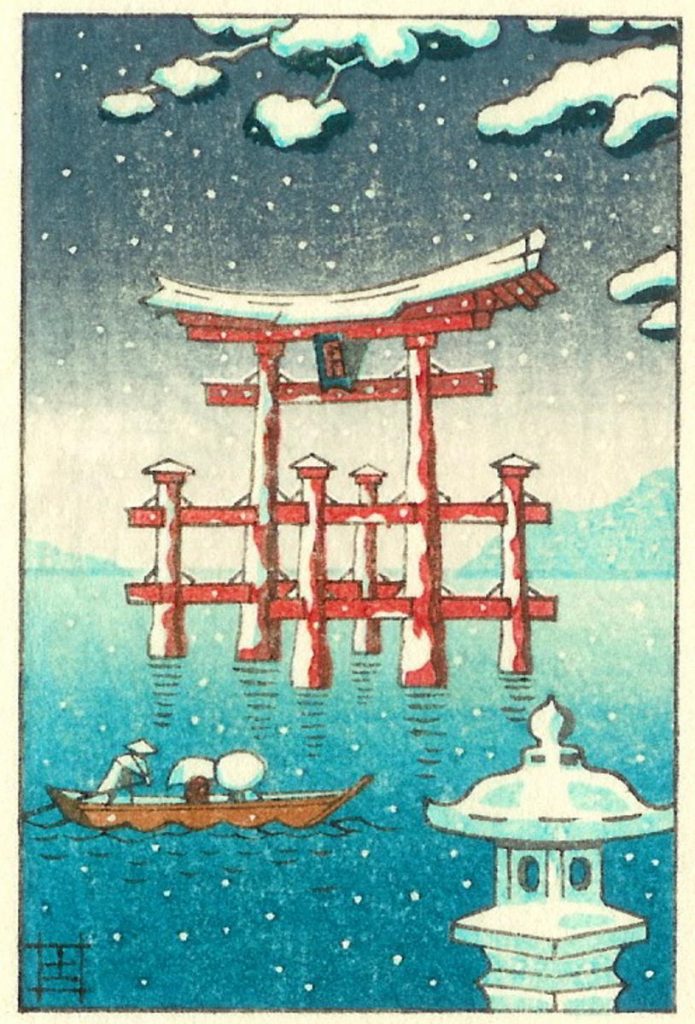
Torii gates also often appear as the subject of ukiyo-e art, also known as Japanese woodblock prints.
The Various Styles of Torii Gates
The various styles of Torii Gates offer a glimpse into the rich artistic heritage of Japan, showcasing the skill and creativity of Japanese craftsmen throughout the ages. Each gate is a unique work of art, intricately designed and crafted to reflect the specific purpose and location it serves. From the grand and imposing to the delicate and understated, these gates come in a wide range of styles, each with its own symbolic meaning.
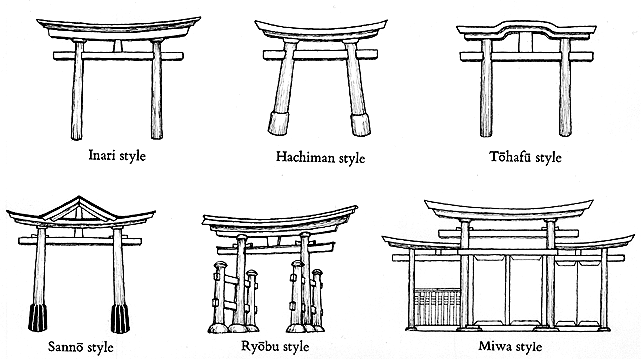
One of the most common styles is the traditional red-painted Torii Gate, with its characteristic two vertical pillars and two horizontal crossbeams. These gates are often seen at the entrances of Shinto shrines and are considered a symbol of the boundary between the sacred and the secular. The vibrant red color is believed to ward off evil spirits and invite positive energy into the sacred space beyond.
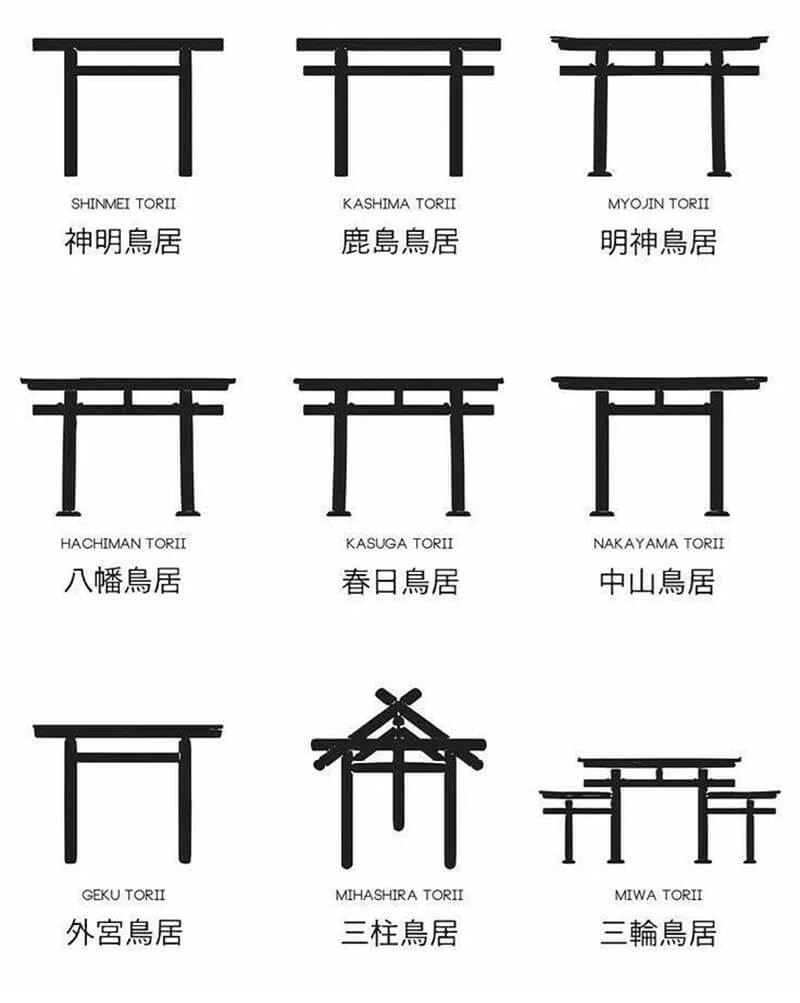
Another style is the Myojin Torii Gate, distinguished by its undulating shape and curved top. These gates are commonly found in mountainous areas and are believed to protect the surrounding natural environment. The curved design is said to mimic the shape of waves, representing the power of the sea and symbolizing the connection between the land and the ocean.
In contrast, the Kasuga Torii Gate features a more ornate and decorative style. These gates are often found in the Kasuga Shrine in Nara and are characterized by their intricate carvings and elaborate roof structures. The Kasuga Torii Gates are a testament to the craftsmanship and attention to detail of Japanese artisans, and they serve as a visual representation of the shrine’s historical and cultural significance.
Other styles of Torii Gates include the stone Torii Gates, which are made entirely of stone and are known for their durability and longevity, and the wooden Torii Gates, which are constructed using traditional Japanese woodworking techniques. Each style of Torii Gate has its own unique charm and allure, captivating visitors with its distinct character and beauty.
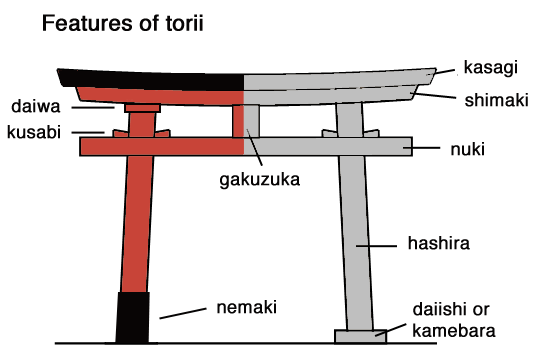
The major part of a Torii gate are:
- two gate posts have an inward incline uchikorobi 内転
- The tie beam nuki 貫
- Wedges kusabi 楔
- the longer top lintel is called kasagi 笠木
- shorter secondary one beneath is called shimaki 島木
- A strut, gakuzuka 額束, between the tie beam and second lintel
As we explore the various styles of Torii Gates, we begin to unravel the hidden meanings and symbolism behind these enchanting structures. From the bold and powerful to the delicate and intricate, each gate tells a story of Japan’s spiritual heritage and the craftsmanship that has been passed down through generations. In the next section, we will delve deeper into the symbolic significance of these gates, discovering the layers of meaning that lie beneath their captivating exteriors.
Symbolism and Meaning Behind Torii Gates
As we explore the various styles of Torii Gates, we begin to unravel the hidden meanings and symbolism behind these enchanting structures. From the bold and powerful to the delicate and intricate, each gate tells a story of Japan’s spiritual heritage and the craftsmanship that has been passed down through generations. The Torii Gates, regardless of their style, hold profound symbolic significance that goes beyond their physical form.
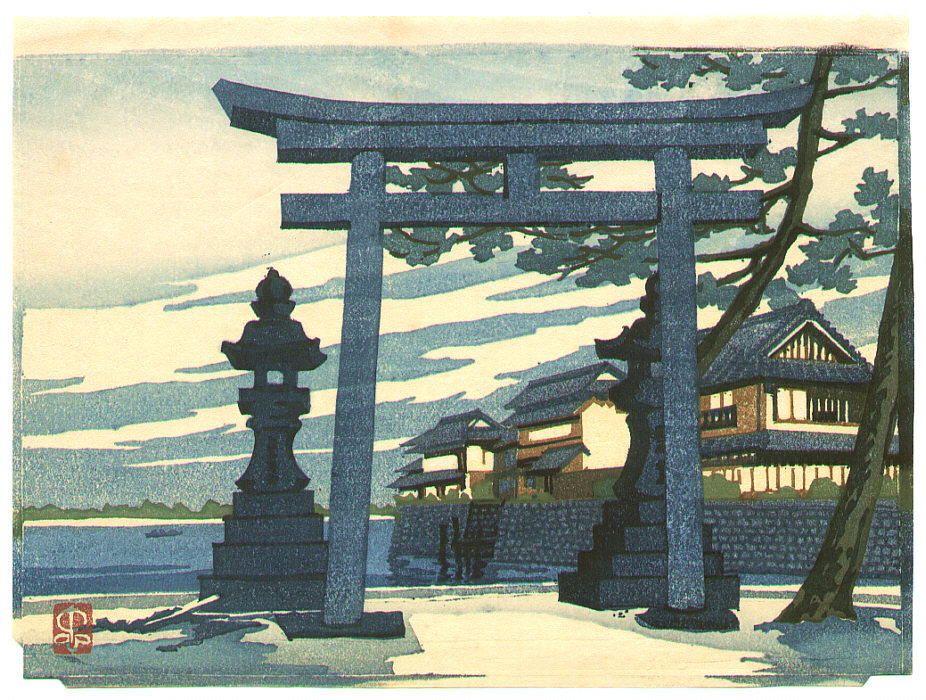
First and foremost, the Torii Gates represent a gateway between the earthly realm and the sacred realm of the spirits. As visitors pass through the Torii Gate, they are believed to be entering a sacred space, leaving behind the mundane and stepping into a realm where the divine and human worlds intersect. This symbolism of transition and transcendence is central to the Torii Gate’s purpose, serving as a portal of spiritual connection and a bridge between the physical and spiritual realms.
Furthermore, the Torii Gates also symbolize the rich cultural and religious history of Japan. They serve as markers for sacred sites such as shrines and temples, indicating the presence of something holy and revered. The craftsmanship that goes into each Torii Gate reflects the deep respect for tradition and the meticulous attention to detail that is deeply ingrained in Japanese culture. From the choice of materials to the precise construction techniques, every aspect of the Torii Gate is a testament to the dedication and reverence for the spiritual heritage of Japan.
Beyond their spiritual and cultural symbolism, Torii Gates also bear individual meanings based on their material, color, and design. For example, the vermilion-colored gates are believed to ward off evil spirits and bring good fortune, while the green gates symbolize fertility and growth. Some gates may feature intricate carvings or intricate details that tell stories from mythology or depict famous historical events. Each element contributes to the overall symbolism and enriches the experience of passing through these remarkable structures.
In the next section, we will delve deeper into the layers of symbolism and artistic marvels that make Torii Gates truly captivating. From the awe-inspiring architectural beauty to the intricate details that carry cultural significance, these gates offer a fascinating exploration into the intersection of art, spirituality, and tradition.
Torii Gates as Artistic Marvels
Beyond their spiritual and cultural symbolism, Torii Gates also bear individual meanings based on their material, color, and design. Each element contributes to the overall symbolism and enriches the experience of passing through these remarkable structures. For example, the vermilion-colored gates are believed to ward off evil spirits and bring good fortune, while the green gates symbolize fertility and growth. Some gates may feature intricate carvings or details that tell stories from mythology or depict famous historical events.
The Torii Gates in Japan are not just magnificent structures, but also serve as artistic marvels. Their awe-inspiring architectural beauty and intricate details carry cultural significance, offering a fascinating exploration into the intersection of art, spirituality, and tradition. The craftsmanship that goes into creating these gates is truly remarkable, showcasing the skill and dedication of the artisans who bring them to life.
From the grandeur of their towering heights to the elegant simplicity of their design, Torii Gates captivate the eye and stir the imagination. Each gate is a testament to the artistic vision of its creator and the enduring legacy it represents. The careful balance of form and function is evident in every curve, every line, and every proportion.
Moreover, the Torii Gates’ artistic marvels go beyond their physical structure. Many gates feature intricate carvings that depict scenes from mythology or historical events, telling stories that have been passed down through generations. These carvings not only add visual interest but also deepen the connection between the spiritual and cultural significance of the gates.
In the next section, we will delve deeper into the layers of symbolism and artistic marvels that make Torii Gates truly captivating.
Exploring Japan’s Most Famous Torii Gates
Exploring Japan’s most famous Torii Gates will take us on a journey through their stunning beauty, rich history, and cultural significance. Each gate tells a unique story, both through its artistic design and the myths and legends associated with it. These Torii Gates, scattered throughout Japan, have become iconic symbols of the country’s spiritual and cultural landscape.
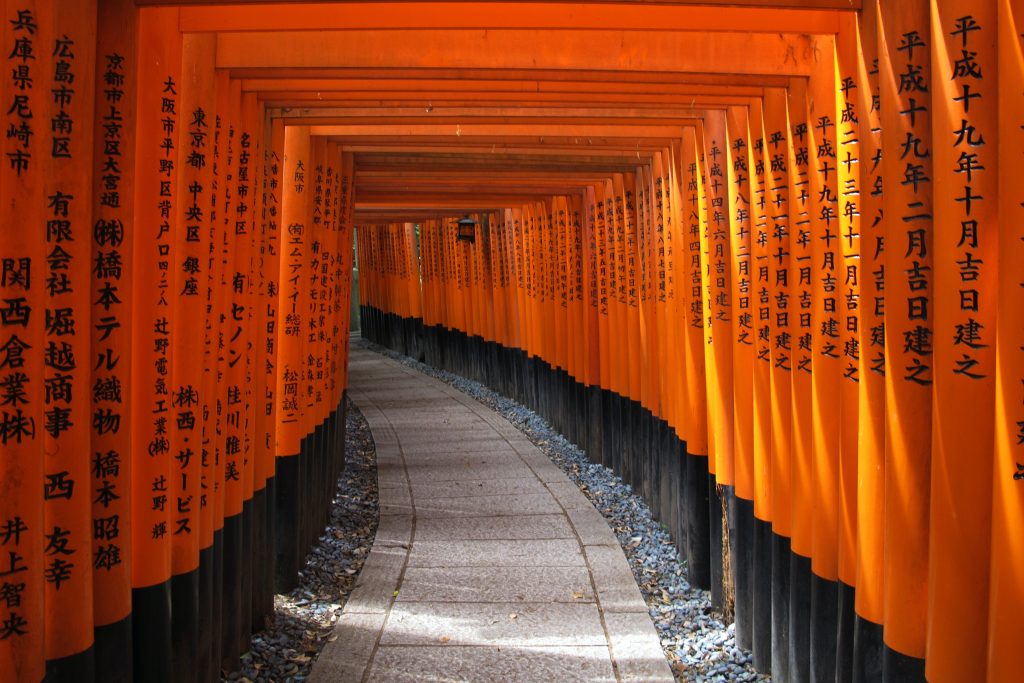
One of the most famous Torii Gates is the one in Fushimi Inari Taisha, located in Kyoto. This sprawling shrine complex is home to thousands of vermillion-colored gates that wind their way up the sacred Mount Inari. Walking through this mesmerizing pathway is like stepping into a different world, as the vibrant red gates create a striking contrast against the lush greenery of the forest. It’s no wonder that this site attracts millions of visitors each year, drawn to its awe-inspiring beauty.
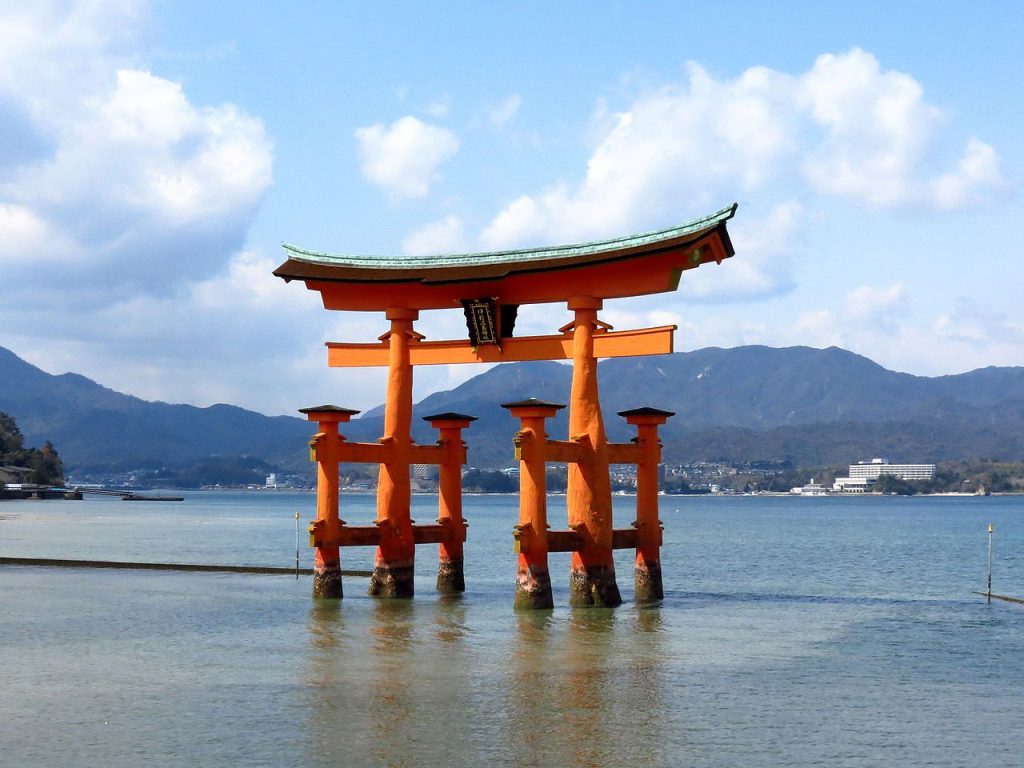
Another renowned Torii Gate can be found at Itsukushima Shrine, situated on the island of Miyajima. This gate, known as the “floating Torii,” seems to defy gravity as it stands in the shallow waters of the bay. During high tide, the gate appears to float on the surface, creating a surreal and magical sight. This unique architectural feat has made the Itsukushima Shrine and its Torii Gate a UNESCO World Heritage Site, further cementing its status as a must-visit destination.
While these two examples may be the most famous, Japan is dotted with countless Torii Gates, each with its own charm and significance. From the towering gates at Meiji Shrine in Tokyo to the peaceful gates lining the path to Hakone Shrine in the mountains, exploring these sacred entrances is like embarking on a treasure hunt of cultural and spiritual exploration.
Beyond their physical beauty, Torii Gates invite contemplation and reflection. As visitors pass through them, it’s as if they are crossing the threshold into a sacred space, leaving behind the mundane world and entering into a realm steeped in tradition and spirituality. The Torii Gates’ aesthetic appeal and symbolic significance make them not only architectural marvels but also powerful conduits for connecting with Japanese history and culture.
Understanding the Cultural Importance of Torii Gates
Next, we will delve deeper into the layers of symbolism and artistic marvels that make Torii Gates truly captivating. Understanding the cultural importance of Torii Gates will unveil the profound meaning behind their designs and the role they play in Japanese society.
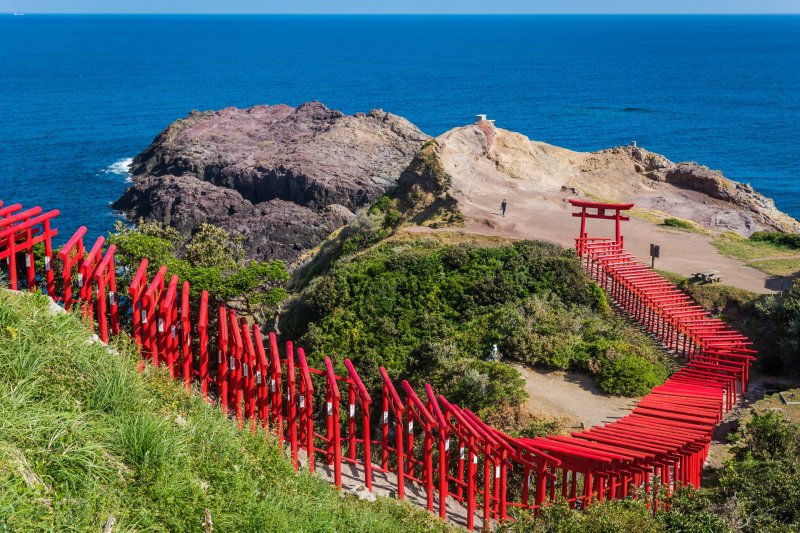
Torii Gates are not merely architectural structures; they embody centuries of Japanese history, spirituality, and cultural significance. Each element of their design holds symbolic meaning, contributing to an enchanting tapestry of traditions and beliefs that have woven themselves into the very fabric of Japan.
One crucial aspect of Torii Gates is their association with Shintoism, the indigenous religion of Japan. Shintoism places great importance on the presence of kami, or spirits, in nature. As visitors pass through the Torii Gates, they are symbolically entering sacred spaces and connecting with the spiritual realm. This deep connection to nature and the divine is a fundamental aspect of Japanese culture, and the Torii Gates serve as physical conduits to uphold these beliefs.
The aesthetics of Torii Gates also hold significant cultural value. The vibrant vermillion color, known as “torii-iro,” is synonymous with these iconic structures. This hue represents vitality, energy, and protection against evil spirits in Japanese folklore. Its bold presence not only adds a visual impact but also serves as a symbolic guardian, guiding individuals towards sacred sites such as shrines and temples.
Furthermore, the graceful curves and elegant simplicity of the Torii Gates’ design reflect the principles of Japanese art and architecture. They embody concepts like wabi-sabi, embracing imperfections and finding beauty in simplicity. The deliberate asymmetry and natural materials used in their construction harmonize with the surrounding landscape, creating a seamless blend of human-made and natural elements.
Beyond their religious and artistic significance, Torii Gates are also deeply ingrained in Japanese society. The act of passing through the gates serves as a form of purification, washing away impurities before entering a sacred space. It is a custom that has been practiced for centuries, highlighting the lasting cultural traditions that shape daily life in Japan.
Understanding the cultural importance of Torii Gates provides a profound glimpse into the essence of Japan. From their spiritual symbolism to their artistic allure, these enchanting structures are an embodiment of the country’s rich heritage. As we continue our exploration of Torii Gates, we will uncover more hidden treasures and marvel at their enduring impact on both the physical and spiritual landscapes of Japan.
Conclusion
In conclusion, the world of Torii Gates in Japan is a captivating fusion of history, art, and culture. Throughout this enchanting journey, we have explored the historical significance of these sacred entrances, marveled at their various styles, deciphered the symbolic meanings they hold, and celebrated their status as artistic marvels. From the famous gates of Fushimi Inari Taisha to the lesser-known gems tucked away in remote corners of the country, these architectural wonders continue to mesmerize visitors with their sheer beauty and cultural importance.
Read more:
- 10 Steps to Create a Beautiful Japandi Home
- Embracing Wabi-Sabi in Interior Design and Art
- Are Foo Dogs Chinese or Japanese? Unraveling the Origins and Symbolism
- The Symbolism of Wildly Popular Japanese Woodblock Art
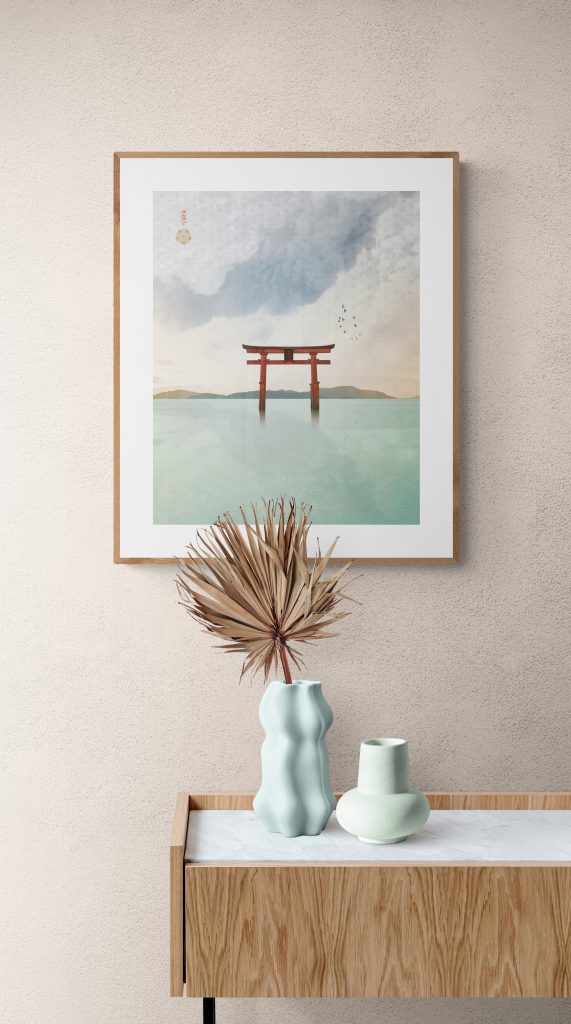
At the Art of Zen we have a wide selection of original Japanese style art prints in the ukiyo-e and Japandi style such as the Torii art print above. Add some zen to your space with some art from the Art of Zen shop.
Photo credit: the featured image at the top of The Floating Torii Gate at Itsukushima Shrine by Elbert Alias.
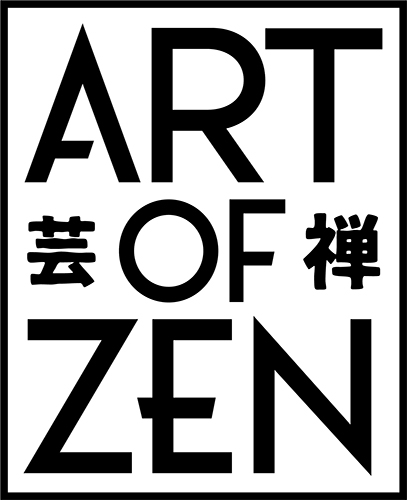



0 Comments